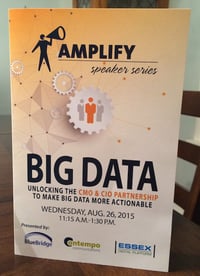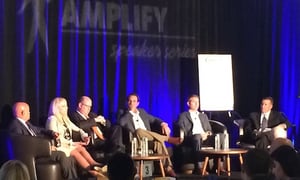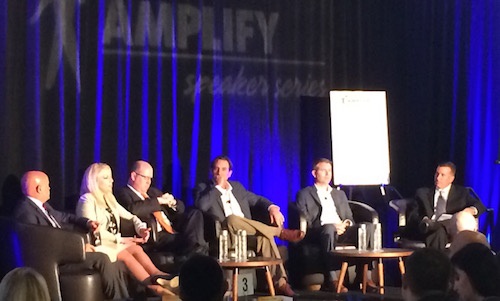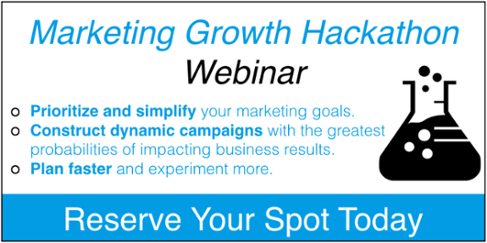 The term “Big Data” has come into play more and more since 2011. But just what is it, and how is it used? Google defines big data as:
The term “Big Data” has come into play more and more since 2011. But just what is it, and how is it used? Google defines big data as:
Extremely large data sets that may be analyzed computationally to reveal patterns, trends, and associations, especially relating to human behavior and interactions.
An example of big data in action is Walt Disney’s use of the wireless tracking “MagicBands” in their parks. The MagicBands are able to track visitor information, like real-time location data, purchase history, information about the visitors, riding patterns and more. Disney analyzes the data to make better decisions to improve visitor experiences.
It’s not just huge conglomerates like Disney that are looking to take advantage of the vast amount of data now available to them. But, to be successful, this use of big data requires a strong partnership between marketing and IT. The collaboration of these two departments is crucial to retrieving the relevant data, and analyzing it in actionable ways.
Recently, the Contempo Communications Amplify Speaker Series featured this very topic, Big Data: Unlocking the CMO and CIO Partnership to Make Big Data More Actionable. Representatives from the Cleveland Indians (@Indians) and Caesars Entertainment Horseshoe Cleveland (@HorseshoeCLE) spoke about how they use big data in their organizations to improve fan experiences. Those participating in the panel include:
Moderator:
- Tom Kramer, President and Co-Founder, ESSEX Digital Platform
Panel:
- Jamie Brown, Vice President of Marketing, Caesars Entertainment
- Scott Lokke, Vice President and General Manager, Caesars Entertainment
- Alex King, Vice President, Marketing and Brand Management, Cleveland Indians
- Neil Weiss, Senior Vice President, Technology and Chief Information Officer, Cleveland Indians
The panel hit on a number of topics, offering actionable ways to take your team from data-deficient to data-savvy.
Below I’ve compiled key highlights from the event, including three ways that your CMO and CIO relationship (or the equivalent in your company) can improve your use of big data to improve customer experience.
1. Open lines of communication between marketing and IT.
The marketing/IT relationship needs to be a collaboration, not just marketing requesting data. Marketing needs to help IT understand what’s important, and what’s not, before pulling gigabytes of data. By working together, you can figure out what you need to accomplish and if the data is available to help you meet those goals. You can better visualize the data, and quickly understand the story it’s telling to make more informed decisions.
Working toward the same goals, your team will become closer. This allows your marketing to be more nimble as you see can see trends developing, and react more quickly.
2. Build a data-centric team.
Businesses need to have a data-driven culture, in which your team relies on metrics to improve decision-making. The team you build is very important, as your information is only as good as the people who put it together. You need to develop a process that is sophisticated enough to get the data you need, while being simple enough that you want to use it.
Taking it a step further, look to hire marketers that have had IT experience—either in the department itself or closely aligned. With this, marketing won’t need IT as much. It frees up IT to focus more on bigger picture items and how to better implement technology solutions.
3. Use big data to work smarter.
Use big data to work smarter to improve customer experiences. Both the Cleveland Indians and Horseshoe Casino use data to make profitable decisions. By testing promotions, they’re able to balance which are attractive to customers (and drive attendance) and are also profitable.
The Indians used data to determine what sections to add for their stadium renovations. They emphasized that they acted on data, not hunches, all based on their different fan personas. These insights inspired them to add local restaurants to their concession areas, setting each area up to represent key Cleveland neighborhoods. They also expanded their kids area, added a new bar with a viewing deck complete with couches, and added a standing room only ticket option that includes your first beer.
Data insights can also improve operational aspects of your marketing. By understanding what promotions attract the most customers, you can use that data to make sure you’re staffed correctly for bigger crowds or to make sure you have the inventory to take care of the increased demand. That’s exactly how the Horseshoe Casino uses their data, especially as they know gift card promotions are popular.
How are you using big data in your organization? What other tips do you have? Tell us in the comments below.
Jumpstart your marketing growth in 2016 with a hackathon.
What if we could spend less time planning, and more time doing? Take a new marketing approach, and host your own growth hackathon. On Dec. 2, PR 20/20 Founder and CEO Paul Roetzer will explain how it works during a free webinar. You’ll learn how to:
- Prioritize and simplify your marketing goals.
- Construct dynamic campaigns with the greatest probabilities of impacting business results.
- Apply new technologies and processes to improve efficiencies and accelerate success.
Image source: PR 20/20

%20Logo_BlueOrange_Trademark.png?width=800&height=269&name=Ready%20North%20(RN)%20Logo_BlueOrange_Trademark.png)




.jpg?width=300&name=Services%20Hub%203%20(3).jpg)




COMMENTS